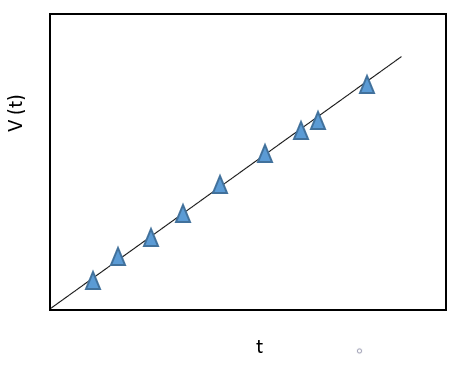This set of Bioseparation Engineering Multiple Choice Questions & Answers (MCQs) focuses on “Constant Pressure Cake Filtration”.
1. Constant pressure filtration refers to ______________
a) constant driving force
b) variable driving force
c) without driving force
d) with driving force
View Answer
Explanation: In bioseparation engineering, the constant pressure filtration of filtration process refers to the process in which the driving force is constant, it means that the pressure drops across the filter medium during the filtration process.
2. When can filtration process be explained by Darcy’s law?
a) Filtration of non-Newtonian liquid
b) Filtration of Newtonian liquid
c) Filtration of any liquid
d) Filtration of mixture
View Answer
Explanation: In bioseparation engineering, the process of filtration can be explained by Darcy’s law depending on the type of liquid being subjected to the filter medium for separation. If the liquid is considered to be a Newtonian liquid, it means that it is free from particles and there will be no hindrance in the filtration process then, the flow of liquid through the filter can be explained by Darcy’s law.
3. How to represent the Darcy’s law?
a) Q = \(\frac{k\Delta P}{\mu l}\)
b) Q = \(\frac{kAP}{\mu l}\)
c) Q = \(\frac{A\Delta P}{\mu l}\)
d) Q = \(\frac{kA\Delta P}{\mu l}\)
View Answer
Explanation: The process of filtration can be explained by Darcy’s law, Q = \(\frac{kA\Delta P}{\mu l}\), where Q is the volumetric filtration rate, k is the Darcy’s law permeability, A is the area of filter medium, ΔP is the pressure drop across the filter medium, μ is the viscosity, l is the thickness of the filter medium.
4. The permeability and thickness of a filter can be combined into ___________
a) medium accessibility
b) medium resistance
c) medium permeability
d) pressure drop
View Answer
Explanation: In the process of filtration, the permeability as well as the thickness of a filter medium can be combined into a medium resistance term represented as RM.
5. How to represent the addition of medium resistance in Darcy’s law?
a) Q = \(\frac{A\Delta P}{\mu R_M}\)
b) Q = \(\frac{K\Delta P}{\mu R_M}\)
c) Q = \(\frac{KA\Delta P}{\mu R_M}\)
d) Q = \(\frac{KA\Delta P}{R_M}\)
View Answer
Explanation: The equation obtained for the medium resistance in the Darcy’s law is Q = \(\frac{KA\Delta P}{\mu R_M}\) where RM the resistance of the medium is is, Q is the volumetric filtration rate.
6. How to express filtration rate in terms of volume of collected filtrate?
a) Q = \(\frac{A\Delta P}{\mu R_M}\)
b) Q = K\(\frac{A\Delta P}{\mu R_M}\)
c) Q = \(\frac{AK\Delta P}{\mu R_M}\)
d) Q = \(\frac{A\Delta P}{R_M}\)
View Answer
Explanation: The equation of the filtration rate in terms of filtrate volume collected, Q = \(\frac{A\Delta P}{\mu R_M}\) and it can be expressed as Q = \(\frac{dV(t)}{dt}\) where, V(t) is the cumulative filtrate volume.
7. What can be determined from the given graph?

a) Cumulative filtrate volume
b) Medium resistance
c) Pressure drop
d) Volumetric filtration rate
View Answer
Explanation: The graph represents the cumulative filtrate volume and the time taken to complete the process of filtration. The value of medium resistance i.e. RM can be determined from the graph based on the equation = \(\frac{dV(t)}{dt}\) = \(\frac{A\Delta P}{\mu R_M}\).
8. What will be the filtration rate of 10cm filter paper disc having 20 kPa pressure drop, 0.2 viscosity, 2m2 area of the filter medium, Rm is 2.5 and the Darcy’s permeability is 2?
a) 160 ml/min
b) 180 ml/min
c) 200 ml/min
d) 140 ml/min
View Answer
Explanation: Q = \(\frac{KA\Delta P}{\mu R_M}\) where Q is the volumetric filtration rate, k is the Darcy’s law permeability, A is the area of filter medium, ΔP is the pressure drop across the filter medium, μ is the viscosity, l is the thickness of the filter medium. Therefore, Q = \(\frac{2 × 2 × 20}{0.2 × 2.5}\) = 160 ml/min.
9. Determine RM and specific cake resistance when area is 0.1 ft2, Cs is 0.015 kg/l, viscosity is 1.1 centipoise and the pressure drop is 10 N/m2, where various time duration is 5, 10, 20, 30 sec with the different cumulative volume are 0.04, 0.055, 0.08, 0.095 ltrs.
a) 1, 3.139 * 108
b) 3.139 * 108, 0
c) 0, 3.139 * 108
d) 3.139 * 108, 1
View Answer
Explanation: When the graph will be plotted t/ V (t) vs. V(t), it gives Kp as slope and B as intercept so the equation obtained will be B = \(\frac{\mu R_M}{A\Delta P}\) hence RM is 0 and Kp is 3 * 109 and therefore, specific cake resistance is 3.139 * 108 m/kg.
10. Calculate the pressure drop when the volumetric filtration rate is 200 ml/min, area of the filter medium is 2.5 cm2 viscosity is 1, length is 2.5 cm and permeability constant is 1.5.
a) 133. 33
b) 143.33
c) 153.33
d) 163.33
View Answer
Explanation: Q = \(\frac{kA\Delta P}{\mu l}\) = 200 = \(\frac{1.5 * 2.5 * \Delta P}{1 * 2.5} = \frac{200*1*2.5}{1.5*2.5}\) = 500/3.75 = 133.33. Therefore, the pressure drop is 133.33 Pacal.
Sanfoundry Global Education & Learning Series – Bioseparation Engineering.
To practice all areas of Bioseparation Engineering, here is complete set of 1000+ Multiple Choice Questions and Answers.
If you find a mistake in question / option / answer, kindly take a screenshot and email to [email protected]
